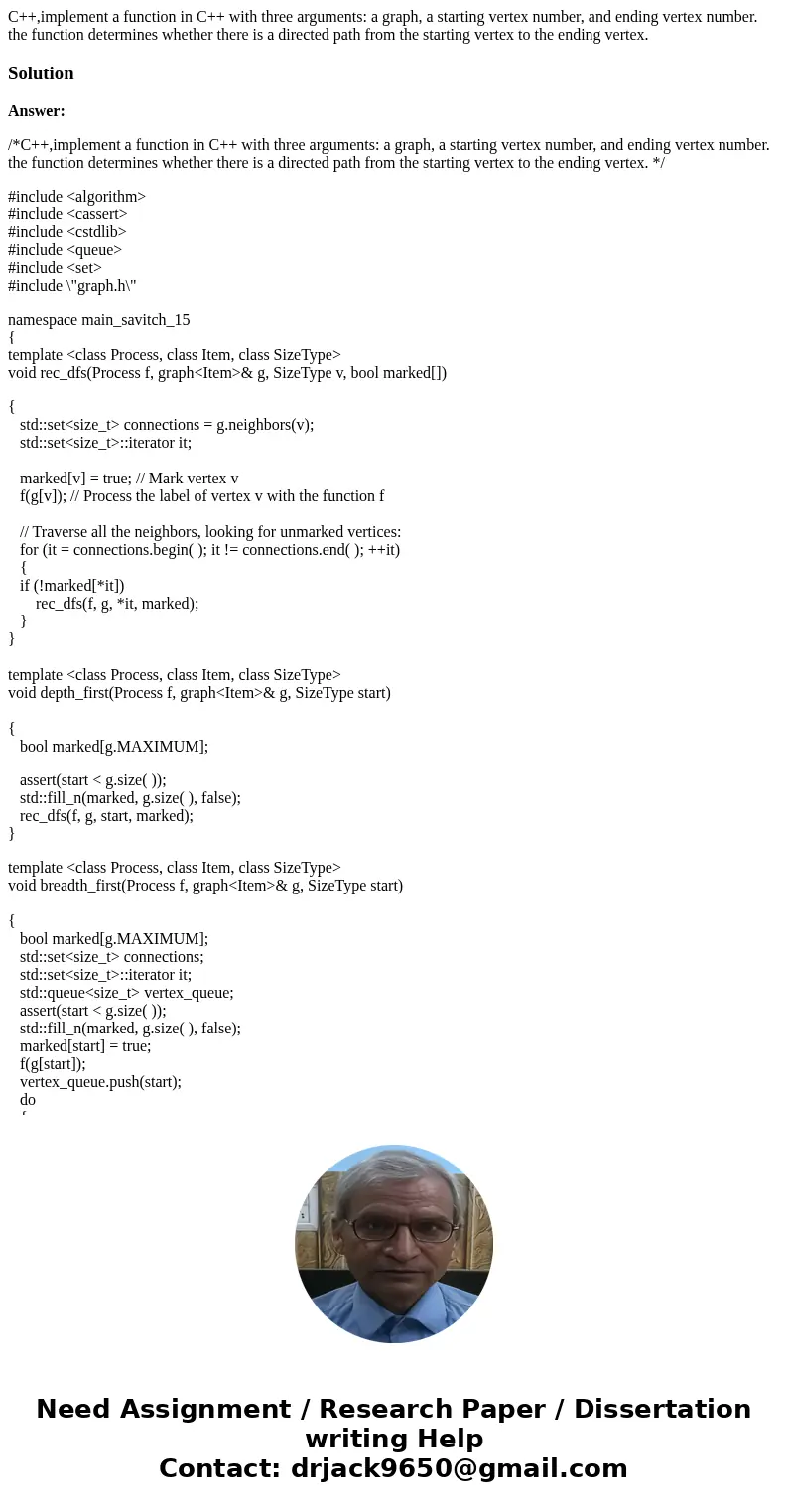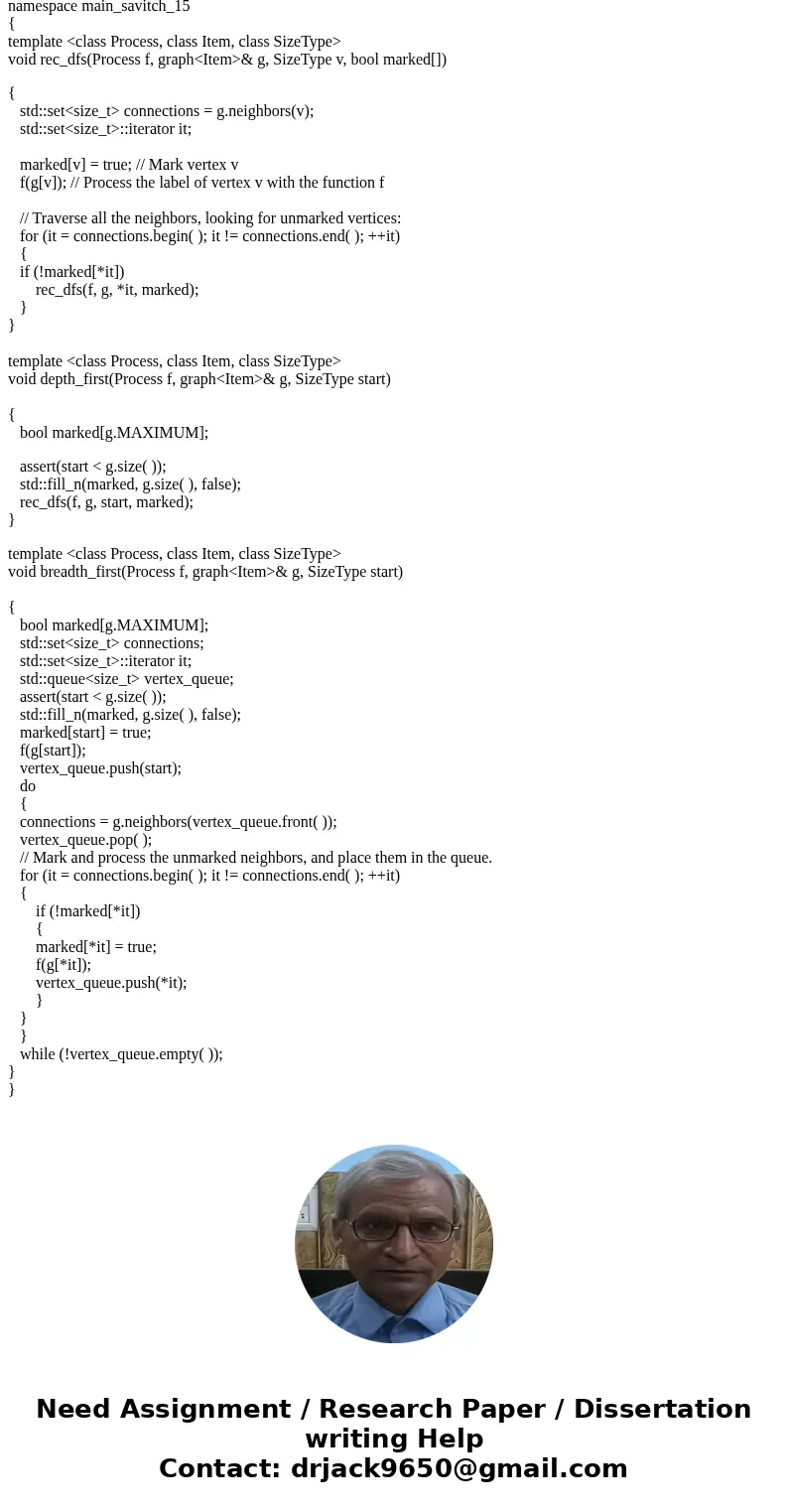Cimplement a function in C with three arguments a graph a st
C++,implement a function in C++ with three arguments: a graph, a starting vertex number, and ending vertex number. the function determines whether there is a directed path from the starting vertex to the ending vertex.
Solution
Answer:
/*C++,implement a function in C++ with three arguments: a graph, a starting vertex number, and ending vertex number. the function determines whether there is a directed path from the starting vertex to the ending vertex. */
#include <algorithm>
#include <cassert>
#include <cstdlib>
#include <queue>
#include <set>
#include \"graph.h\"
namespace main_savitch_15
{
template <class Process, class Item, class SizeType>
void rec_dfs(Process f, graph<Item>& g, SizeType v, bool marked[])
{
std::set<size_t> connections = g.neighbors(v);
std::set<size_t>::iterator it;
marked[v] = true; // Mark vertex v
f(g[v]); // Process the label of vertex v with the function f
// Traverse all the neighbors, looking for unmarked vertices:
for (it = connections.begin( ); it != connections.end( ); ++it)
{
if (!marked[*it])
rec_dfs(f, g, *it, marked);
}
}
template <class Process, class Item, class SizeType>
void depth_first(Process f, graph<Item>& g, SizeType start)
{
bool marked[g.MAXIMUM];
assert(start < g.size( ));
std::fill_n(marked, g.size( ), false);
rec_dfs(f, g, start, marked);
}
template <class Process, class Item, class SizeType>
void breadth_first(Process f, graph<Item>& g, SizeType start)
{
bool marked[g.MAXIMUM];
std::set<size_t> connections;
std::set<size_t>::iterator it;
std::queue<size_t> vertex_queue;
assert(start < g.size( ));
std::fill_n(marked, g.size( ), false);
marked[start] = true;
f(g[start]);
vertex_queue.push(start);
do
{
connections = g.neighbors(vertex_queue.front( ));
vertex_queue.pop( );
// Mark and process the unmarked neighbors, and place them in the queue.
for (it = connections.begin( ); it != connections.end( ); ++it)
{
if (!marked[*it])
{
marked[*it] = true;
f(g[*it]);
vertex_queue.push(*it);
}
}
}
while (!vertex_queue.empty( ));
}
}


 Homework Sourse
Homework Sourse